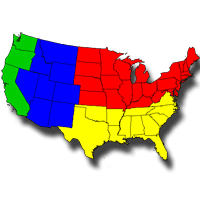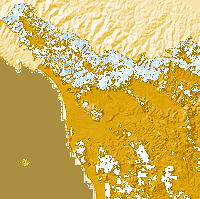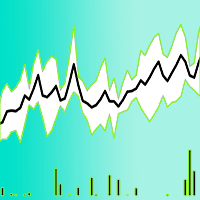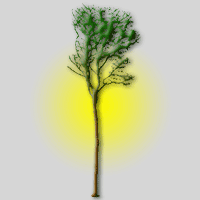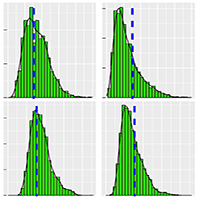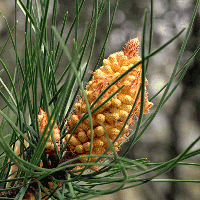
Simplified methods to inventory the current annual increment of forest standing volume
PA Marziliano (1) , G Menguzzato (1), A Scuderi (1), P Corona (2)
iForest - Biogeosciences and Forestry, Volume 5, Issue 6, Pages 276-282 (2012)
doi: https://doi.org/10.3832/ifor0635-005
Published: Dec 17, 2012 - Copyright © 2012 SISEF
Research Articles
Abstract
The assessment of the current annual increment of forest standing volume (CAI) is a fundamental tool to support forest management and planning. A suitable approach to such an end is to rely on growth and yield models. However, this kind of models are often not available for many countries and/or locations and/or species. Furthermore, they may become obsolete due to potential changes in the environmental and silvicultural conditions. Such shortcomings may be distinctively detrimental in the context of forest inventories. Several methods have been proposed to inventory CAI on one single occasion, i.e., when repeated measurements of standing volume are not available. A well-known family of methods, still largely exploited in Alpine and Eastern European countries, derives from the estimation of the percentage current annual increment of forest standing volume by the current annual increments of stem diameter and tree height (Δh). In this study an experimental comparison of Δh assessment by three different approaches is presented with reference to a properly designed case study: (i) Δh is measured on felled trees; (ii) Δh is estimated by dynamic height curve (i.e., diameter-height-age model); (iii) Δh is estimated by conventional height curve (i.e., diameter-height model). Under the examined experimental conditions (a pure forest of silver fir on highly fertile soils in southern Italy, aged around 60 years), both simplified approaches (ii) and (iii) have proven to underestimate height increments, with a larger underestimation by the approach based on the conventional height curve. However, the consequent error in the estimation of percentage current annual increment of forest standing volume has proved to be quite limited (4% for the approach based on the dynamic height curve and around 9% for the approach based on the conventional height curve). Hence, such simplified approaches may be rather safely considered for estimating percentage current annual increment of forest standing volume when neither Δh is directly detectable on standing trees nor sample trees can be felled, nor an appropriate model to predict Δh is available. The Δh estimation on the conventional height curve should turn out to be even more suitable in the case of uneven-aged stands, where the position of the height curve remains stationary over time.
Keywords
Forest growth, Percentage current annual increment, Current annual increment of tree height, Schneider’s coefficient, Forest management, Forest inventory
Authors’ Info
Authors’ address
G Menguzzato
A Scuderi
Dipartimento di Gestione dei Sistemi Agrari e Forestali (GESAF), Mediterranean University di Reggio Calabria, Loc. Feo di Vito, I-89060 Reggio Calabria (Italy)
Dipartimento per l’Innovazione nei sistemi Biologici, Agroalimentari e Forestali (DIBAF), University of Tuscia, v, San Camillo de Lellis snc, I-01100 Viterbo (Italy)
Corresponding author
Paper Info
Citation
Marziliano PA, Menguzzato G, Scuderi A, Corona P (2012). Simplified methods to inventory the current annual increment of forest standing volume. iForest 5: 276-282. - doi: 10.3832/ifor0635-005
Academic Editor
Marco Borghetti
Paper history
Received: Jul 18, 2012
Accepted: Oct 16, 2012
First online: Dec 17, 2012
Publication Date: Dec 28, 2012
Publication Time: 2.07 months
Copyright Information
© SISEF - The Italian Society of Silviculture and Forest Ecology 2012
Open Access
This article is distributed under the terms of the Creative Commons Attribution-Non Commercial 4.0 International (https://creativecommons.org/licenses/by-nc/4.0/), which permits unrestricted use, distribution, and reproduction in any medium, provided you give appropriate credit to the original author(s) and the source, provide a link to the Creative Commons license, and indicate if changes were made.
Web Metrics
Breakdown by View Type
Article Usage
Total Article Views: 62456
(from publication date up to now)
Breakdown by View Type
HTML Page Views: 52640
Abstract Page Views: 3564
PDF Downloads: 4559
Citation/Reference Downloads: 74
XML Downloads: 1619
Web Metrics
Days since publication: 4743
Overall contacts: 62456
Avg. contacts per week: 92.18
Citation Metrics
Article Citations
Article citations are based on data periodically collected from the Clarivate Web of Science web site
(last update: Mar 2025)
Total number of cites (since 2012): 19
Average cites per year: 1.36
Publication Metrics
by Dimensions ©
Articles citing this article
List of the papers citing this article based on CrossRef Cited-by.
References
Introduction. In: “Advances in forest inventory for sustainable forest management and biodiversity monitoring” (Corona P, Koehl M, Marchetti M eds). Kluwer, Dordrecht, The Netherlands, pp. 71-85.
Gscholar
Forest management: to sustain ecological, economic, and social values (4th edn). McGraw-Hill, New York, USA.
Gscholar
Modelling forest development. Kluwer Academic Publishers, Dordrecht, The Netherlands.
Gscholar
Sul calcolo dell’incremento percentuale degli alberi in piedi. L’Italia Forestale e Montana, XXIV: 187-191.
Gscholar
Il rilevamento dendro-crono-auxometrico. In: “Nuove metodologie nella elaborazione dei piani di assestamento dei boschi”. Cap. 13. ISEA, Bologna, Italy, pp. 401-714.
Gscholar
I caratteri quantitativi 2005 - parte 1, vers. 2. Inventario nazionale delle foreste e dei serbatoi forestali di carbonio (Gasparini P, De Natale F, Di Cosmo L, Gagliano C, Salvadori I, Tabacchi G, Tosi V, eds). MiPAAF - Ispettorato Generale Corpo Forestale dello Stato, CRA-MPF, Trento, Italy.
Gscholar
Piano economico del patrimonio rustico di proprietà del Comune di Serra San Bruno (Catanzaro). Decennio di applicazione 1974-1983/84. C.F.S. Ispettorato Regionale delle Foreste, Reggio Calabria. Ufficio Assestamento Calabria, Catanzaro, Italy.
Gscholar
Forest dynamics, growth and yield. Springer Verlag, Berlin Heidelberg, Germany.
Gscholar
Tree rings and environment dendroecology. WSL FNP Haupt, Bern, Switzerlands, pp. 609.
Gscholar
Prediction of height increment for models of forest growth. Res. Pap. INT-164, USDA Forest Service, pp. 20.
Gscholar
Forest growth and yield modeling. John Wiley & Sons, Ltd, Chicheste, UK.
Gscholar


